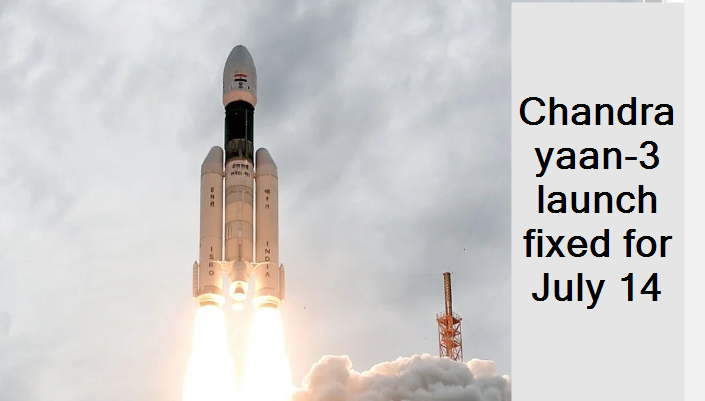Chandrayaan-3 launch fixed for July 14
Finally, it is official. India’s third moon mission – Chandrayaan-3 – is slated for July 14 afternoon and not on July 13.
Finally, it is official. India’s third moon mission – Chandrayaan-3 – is slated for July 14 afternoon and not on July 13. The Indian Space Research Organisation (ISRO), in a tweet on Thursday, July 6, said: “Announcing the launch of Chandrayaan-3: LVM3-M4/Chandrayaan-3 Mission:The launch is now scheduled for July 14, 2023, at 2:35 pm IST from SDSC, Sriharikota.” In other words, the LVM3 rocket’s fourth mission is Chandrayaan-3.
The rockets will carry the Chandrayaan-3 spacecraft weighing 3,900 kg or 3.9 ton, which is a tad lower than the total carrying capacity of LVM3 rocket.
Earlier, several media outlets had reported July 13 as the launch date for Chandrayaan-3.
“We have the launch window between July 12 and July 19. The exact date has not been finalised,” a senior Indian Space Research Organisation (ISRO) official, not wanting to be named, had told IANS.
Did the ISRO consider July 13 unlucky and decided the launch on July 14? The space agency officials might say otherwise, but it should be noted since 1993, the ISRO had never launched any one of its rockets – PSLV, GSLV, LVM3 or SSLV- on a 13th.
The ISRO, till now, was not able to explain the absence of the rocket named Polar Satellite Launch Vehicle-C13 (PSLV-C13). After sending up rocket PSLV-C12, the ISRO jumped one number ahead and called its next rocket, which launched Oceansat-2 and six European nano satellites, as PSLV-C14!
Queried about PSLV-C13, a high-ranking ISRO official told IANS: “There is no such rocket designated with that number.” He declined to say if ISRO considered 13 an unlucky number.
The ISRO might not have considered July 15 as the launch date for Chandrayaan-3 as Chandrayaan-2 was originally slated for launch on July 15, 2019. However, owing to a technical problem at the last moment, the launch was postponed to July 22, 2019.
The Chandrayaan-3 comprises an orbiter or the propulsion module, a lander called Vikram, and a rover called Pragyan. The orbiter, or the propulsion module as the ISRO named it weighs 2,148 kg, and the lander, including the rover, 1,752 kg.
The main purpose of Chandrayaan-3 is to safely land the lander on the moon soil. Following that, the rover will roll out to do the experiments




